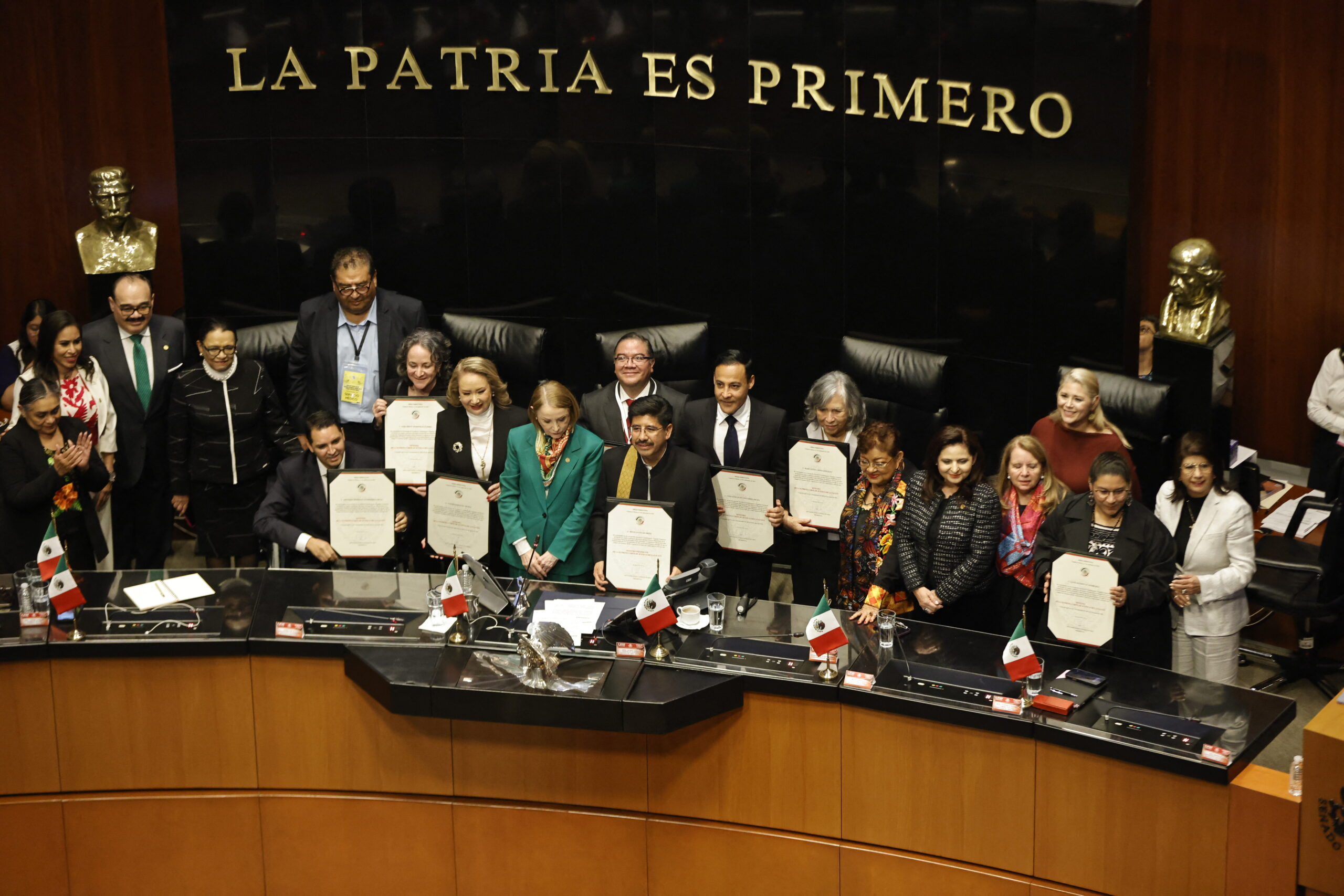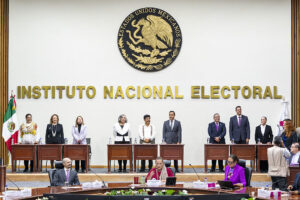MEXICO CITY—Earlier this month, the Mexican Congress approved President Claudia Sheinbaum’s reform to the amparo law, a judicial process that seeks to protect individuals from abuse of authority by state powers. It’s one of the country’s most significant legal innovations, originating with the Constitution of Yucatán of 1841, and even influenced other Latin American countries to adopt similar laws that buffer citizens against unconstitutional government actions.
For years, amparo trials have allowed Mexicans to halt a wide range of government abuses and unlawful actions, from preventing the imprisonment of individuals before a final conviction, to stopping infrastructure projects that lacked environmental safeguards, or even forcing public hospitals to guarantee the supply of cancer medication for children after reports of shortages. Before the reform, citizens could use the amparo law to suspend unconstitutional laws and challenge government actions even if they weren’t personally or directly harmed.
After Morena won the presidential election in 2018, former President Andrés Manuel López Obrador (AMLO) adopted a confrontational stance against the judiciary, particularly against the Supreme Court justices, accusing them of elitism and corruption without any evidence. This hostility was primarily fueled by the Supreme Court’s resistance to some of AMLO’s most ambitious initiatives, such as militarizing public security or excluding private investment from the energy sector.
The most aggressive assault against the legal system came with a constitutional reform in 2024, which, despite widespread criticism, requires judges to be elected through popular vote—an unprecedented measure that undermines judicial independence and the separation of powers. The amparo’s recent reform builds on this trajectory, further consolidating executive power at the expense of judicial independence and human rights protections.
Supporters argue that the reform enables more efficient justice and expedited protection, largely through practical improvements, such as allowing amparo lawsuits to be filed digitally and setting time limits for judges to issue rulings. However, the law introduces regressive provisions that roll back decades of judicial progress in protections. It represents a significant setback in safeguarding the country’s human rights, ultimately benefiting the government rather than its citizens. Any potential practical improvements are overshadowed if the law’s primary mechanism is fundamentally flawed.
Backsliding reform
The most worrisome aspect of the reform lies in how it restricts access to the amparo, making it harder for people to challenge the government in court. The new law reinstates a narrower model that confines protection to those who can prove direct and personal harm caused by government actions, thereby limiting collective claims. Now, communities or groups of individuals affected by government actions—such as cases involving infrastructure projects that pollute water supplies or cause deforestation—would no longer be allowed to proceed. This change tilts the balance in favor of the government rather than following the tradition of expanding access for citizens.
The reform also restricts precautionary protections that allowed courts to compel the government to act immediately in pending cases. For example, federal judges made the responsible authorities provide medicine for children with cancer even before the final ruling was issued, which could take several months or even years. Under the new reform, those affected may have to wait for the final ruling, delaying urgent protections in sensitive cases.
Separately, the amendment overturns the traditional presumption of “suspension,” meaning courts no longer automatically pause contested government actions to prevent harm. Claimants now face strict new conditions and a heavy burden of proof, including demonstrating that their case does not affect broad “public” or “social” interests—categories that are ambiguous and have already been abused for political purposes.
Additionally, the reform bans court injunctions in cases involving government concessions and permits for industries such as telecommunications or mining, sparking serious concerns among businesses and investors. The reform will affect companies that require government permissions or licenses to operate. Companies that typically rely on these licenses—which often provide legal certainty over several years or even decades—will no longer be able to obtain precautionary measures if the government unilaterally withholds or cancels a concession without proper justification.
Proving wealth
On top of that, the reform blocks suspensions in cases involving alleged money laundering or suspicious transactions, effectively shifting the burden of proof onto citizens, forcing them to prove that their funds come from legal sources. Under the new law, tax authorities can now freeze a personal or business bank account on suspicion, whether valid or arbitrary, without allowing for precautionary measures to challenge the freeze.
This represents a serious violation of rights, leaving both companies and individuals without adequate protection. Many businesses may be unable to sustain operations or pay employees if there are no remedies available for frozen accounts. This undermines due process and violates the presumption of innocence, given that it should be the government’s responsibility to prove the illicit nature of funds when freezing bank accounts during an investigation.
It is no coincidence that this reform was announced after the judicial elections by popular vote, a process marred by irregularities that ultimately favored the ruling party. With a newly constituted Supreme Court composed of justices politically loyal to the government, it was unlikely that legal challenges seeking to declare the reform unconstitutional could succeed. The ruling party now has subordinated the judiciary and tightly controls who can access the courts, in what conditions, and when—further undermining tribunals that already fell short of the basic standards of independence and impartiality.
All together, these changes significantly weaken the amparo’s protective clout. By restricting standing, raising evidentiary thresholds, and making precautionary measures conditional on an ambiguous notion of public interest, the reform makes it far harder for citizens to safeguard their rights against state abuses. It also marks a major obstruction in Mexico’s human rights protections, further eroding trust in the judiciary at both the national and international levels.










